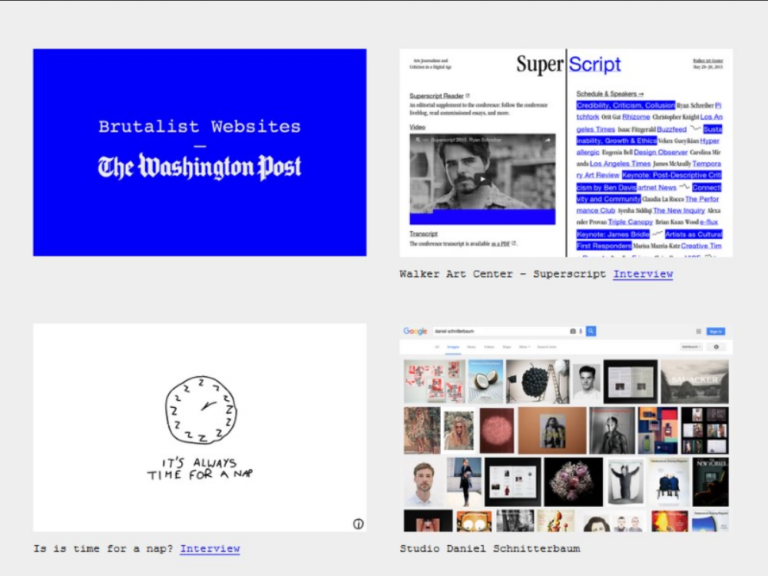
The Hottest Trend in Web Design Is Intentionally Ugly, Unusable Sites
There’s a notable trend in contemporary web design: the deliberate creation of websites that intentionally appear, well… unconventional.
Take a look at websites like Hacker News, Pinboard, The Drudge Report, Adult Swim, and Bloomberg Businessweek features. Despite varying in age, from decades-old to recently built, they all share a common trait—they eschew the polished, user-friendly interfaces typically considered industry best practices. Instead, these sites are constructed with imperfect, hand-coded HTML and draw design inspiration from the graphics of the 1990s.

This particular style of web design is often referred to as “web brutalism.” Much of the recent interest in this approach can be attributed to the efforts of Pascal Deville. Back in 2014, Deville, who now serves as the creative director at the Freundliche Grusse advertising agency in Zurich, Switzerland, launched brutalistwebsites.com. The purpose was to showcase websites that he felt embodied the “brutalist” aesthetic: designs characterized by their “ruggedness and disregard for appearing comfortable or user-friendly.” This approach is a reaction, particularly among younger designers, to the light, optimistic, and frivolous web design prevailing today. (In architecture, brutalism describes a 1970s movement featuring large structures with exposed concrete construction.)
Recently, the term has gained significant attention, especially after Deville’s site made its appearance on Hacker News and quickly went viral. Within 24 hours, Deville saw more than 100,000 unique visitors to his site, generating 160,000 page views. Interest in web brutalism has continued to surge, with Deville now receiving over 100 site submissions daily.

Devilles explains that what sets the chosen submissions apart is not just their appearance but also their underlying structure. He looks for websites that demonstrate a rugged, handmade, HTML-based quality rather than a streamlined application.
Interestingly, many coders and designers who embrace this style didn’t set out with the specific intention to mimic this aesthetic. Instead, they arrived at it organically, driven by a desire to create something truly original.
Brutalism is captivating because it lacks a fixed set of aesthetic conventions. Jake Tobin, the mind behind trulybald.com, which functions as the online home of Truly Bald Records and a web playground, expresses how the style’s defining characteristics are influenced by the platforms it’s built on. His site incorporates flashy colors, irregular spacing, and a unique typeface—a deliberate departure from professionalism and ease of use, crafted using HTML, PHP, and a simple text editor.

Nathaniel Smith, from tilde.town, echoes this sentiment, emphasizing the freedom to create exceptional online experiences without adhering to conventional “best practices.”
One notable challenge with this disregard for rules is that it makes it difficult to precisely define “brutalism.” Deville acknowledges the need for a potential new definition to encompass the evolving iterations of this style.
However, brutalism remains one of those things that you recognize when you see it. And lately, you’ve been seeing it quite a bit.